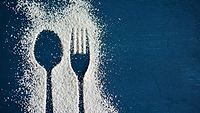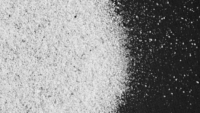International Society of Beverage Technologists Carbon Dioxide Guidelines

Carbon dioxide is a colorless, odorless, noncombustible gas, liquifiable to a heavy, volatile, colorless liquid. The function of CO2 in beverages is to provide effervescence, some acidity and some protection against microbiological growth without contributing any off-appearances, off-odor, off-taste, or undesirable levels of trace impurities. However, CO2, is obtained as a co-product from the manufacture of various chemicals, from the thermal decomposition of carbonates during the production of lime, from the combustion of carbonaceous material, from fermentation processes, and from gases found in natural springs and wells. Thus, carbon dioxide must undergo effective purification to be considered suitable for its intended use as a direct food additive in beverages. Gas suppliers must identify, measure and control the levels of trace impurities in the purified CO2, and similarly, carbon dioxide users have a responsibility to take appropriate steps to ensure that suppliers have met this responsibility.
The International Society of Beverage Technologists (ISBT) Carbon Dioxide (CO2) Guidelines have been prepared to provide guidance on the key characteristics for the quality and purity of carbon dioxide used in beverages. These guidelines are also intended to provide assistance to carbon dioxide suppliers and users in achieving compliance with applicable international regulatory standards.
Guideline Development
The ISBT Carbon Dioxide Subcommittee was formed primarily to address carbon dioxide quality concerns faced by beverage manufacturers. There were several large beverage product recalls related to carbonyl sulfide contamination, which prior to this time had a recommended industry specification of 0.5 ppm. At the 1997 BevTech Meeting, a paper was presented detailing sensory studies that showed carbonyl sulfide levels as low as 0.22 ppm in CO2 were detected organoleptically in samples of carbonated water. Thus the current carbon dioxide industry specifications were not tight enough to insure sensory acceptability.
Since this time, other issues have arisen such as an incident with benzene-containing CO2 in United Kingdom this past summer. As a result, ISBT Subcommittee’s focus became international. The subcommittee charter is: “To develop voluntary guidelines for carbon dioxide used in the beverage industry, and offer methods of analysis and rationales.” The subcommittee membership is international and consists of 34 members representing seven bottlers, two food companies, five gas suppliers and two testing laboratories.
The ISBT CO2 Guidelines document has three sections. First, the Quality Guidelines section details parameters and limits, as well as rationale. The second section, Analytical Methods, includes a preamble addressing general concerns such as safety and representative sampling, provides one credible “referee method” for each parameter, and includes supplemental methods. Finally, the Reference Document section provides impurity information and lists Quality Verification Levels (QVLs) for target impurities not listed in the guidelines. An overview of each of these sections is discussed in this article.
 Quality Guidelines
Quality Guidelines
The Quality Guidelines section offers a suggested list of parameters to be tested for in beverage-grade carbon dioxide, as well as a recommended limit. Twenty key parameters for carbon dioxide use beverages have been identified and listed (Table 1 ISBT Carbon Dioxide Guidelines). Some parameters relate to expected purification processes of developed gas suppliers and are selected indicators of the removal of certain classes of compounds. Other parameters are of particular concern to carbonated beverage manufacturers and are known to negatively impact the character of carbonated beverages.
For each listed parameter, a rationale for its inclusion has been provided. Three rationale definitions were identified:
• Sensory: Any attribute that negatively impacts the taste, appearance, or odor of beverage.
• Process: Any attribute that defines a key parameter in a controlled process and an important consideration in the beverage industry.
• Regulatory: Any attribute whose limit is Set by governing regulatory agencies. Once purified to food grade and to the beverage quality levels described, the carbon dioxide must be handled to avoid contamination. All applicable principles of safety and Good Manufacturing Practices (GMPs) for food additives should be applied throughout the process, from production through delivery, storage and use.
Analytical Methods
The members of the ISBT CO2 Subcommittee Analytical Team developed the analytical methods section. Participating members include recognized chemicoanalytic experts from carbon dioxide producers and end-users. This joint effort of manufacturers and users is unique for our industries.
As a result of tighter controls required of beverage-grade carbon dioxide, some testing parameters are new, while others require lower levels of detection. These methods are offered as reference “referee methods” intended to provide sound technical guidance in the analysis of carbon dioxide.
The methods section opens with a preamble addressing general safety and sampling concerns. Methods for each of the 20 parameters identified in the guidelines follow, using this format. Since obtaining a representative sample of carbon dioxide is essential for analysis, sampling procedures for collection into metal cylinders, glass cylinders and polymeric bags are also included.
The term “best practice” may vary among industries, thus each procedure included here was written with the intent of being one of several credible analytic test methods by which a carbon dioxide analysis may be made. Acceptable test equivalents are cited in the Discussion & Notes section of each procedure. A Performance Criteria section is also included with certain procedures to provide an estimate of the accuracy, precision, detection levels and related measurements.
Analytical techniques and instrumentation used in these analyses range from gas chromatography-flame ionization detector (GC-FID) for total volatile hydrocarbons (as methane) and acetaldehyde; gas chromatography-mass spectrometry (GC-MS) for aromatic hydrocarbon; sulfur analyzers for total sulfur and sulfur dioxide; and moisture analyzers for moisture analysis. All methods included assume a reasonable competency from the analyst and, therefore, are not so prescriptive as to limit a qualified chemist.
Due to partitioning of carbon dioxide contaminants, the selection of which phase to sample for each analysis is a critical consideration. To address this concern, each procedure includes a Sampling section, which recommends the phase most suitable for sampling to analyze for each contaminant.
A Supplemental Methods section has been added to provide methodology for testing additional compounds of interest not covered in the guidelines, such as hydrogen cyanide and vinyl chloride.
 Reference Document
Reference Document
The final portion of the International Society of Beverage Technologists Carbon Dioxide Guidelines is a reference to compressed gas industry documents that provide additional impurity information. The impurities in carbon dioxide are related to its source and sometimes to its purification process. Through collaborative work between the ISBT, Compressed Gas Association (CGA), and European Industrial Gas Association (EIGA), the CGA’s Commodity Specification for Beverage Grade Carbon Dioxide [Publication G 6.2] and EIGA’s publication AHG IGC 1.1 Carbon Dioxide Source Certification, Quality Standards and Verification are under revision to provide a listing of potential impurities resulting from the most common carbon dioxide production and purification processes (Table 2. Potential trace level impurities by source type—excluding air gases and moisture). Furthermore, these publications will provide Quality Verification Limits for independent contaminants, such as hydrogen cyanide and methanol. These documents will be available later this year.
Conclusion
In developing the ISBT Carbon Dioxide Guidelines, our goal was to publish a reference document that would address concerns and regulatory issues with beverage grade carbon dioxide on an international scale. Thank you to all of the members of the subcommittee as well as supporters from other industry organizations who have worked together to get this accomplished.
The ISBT Carbon Dioxide Guidelines were accepted by the membership at the 1999 annual meeting. Copies of the guidelines are available from the ISBT headquarters. The CO2 subcommittee will remain intact for another year and will continue work on Version Two of the guidelines, which will address additional concerns.
Stefanie M. Ringo of Cargill Inc. serves as chair of the CO2 Subcommittee for ISBT.
Acknowledgment
The author would like to extend appreciation to all of the members of the International Society of Beverage Technologists CO2 Subcommittee, who have worked on this ground-breaking initiative for two years, and to the staff of ISBT for additional support and permission to publish this article in Food Safety Magazine.
Readers may contact ISBT for more information about obtaining the Carbon Dioxide Guidelines at 8120 S. Suncoast Blvd., Homosassa, FL 34446; (352) 382- 2008; fax (352) 382-2018; or visit the web site at www.bevtech.org.
Bibliography
CGA G-6.2. Commodity Specification for Carbon Dioxide, Fourth Edition. Compressed Gas Association, Inc., Arlington, VA. 1999.
EIGA Publication AHG IGC 1.1. Carbon Dioxide Source Certification, Qualify Standards and Verification. European Industrial Gases Association. 1999.
ISBT Carbon Dioxide Guidelines. International Society of Beverage Technologists. 1999.
Looking for a reprint of this article?
From high-res PDFs to custom plaques, order your copy today!





